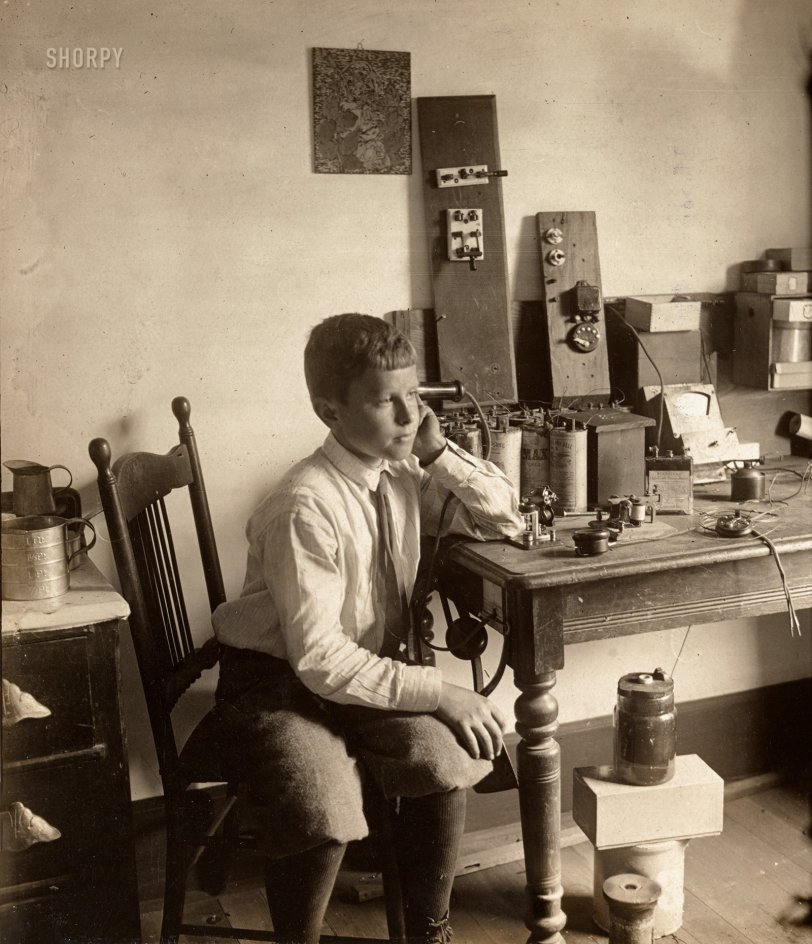


Framed or unframed, desk size to sofa size, printed by us in Arizona and Alabama since 2007. Explore now.
Shorpy is funded by you. Patreon contributors get an ad-free experience.
Learn more.

- Baldwin 62303
- Baldwin VO-1000
- Cold
- No expense spared
- Tough Guys
- Lost in Toyland
- And without gloves
- If I were a blindfolded time traveler
- Smoke Consumer Also Cooks
- Oh that stove!
- Possibly still there?
- What?!?
- $100 Reward
- Freeze Frame
- Texas Flyer wanted
- Just a Year Too Soon
- WWII -- Replacing men with women at the railroad crossing.
- Yes, Icing
- You kids drive me nuts!
- NOT An Easy Job
- I wonder
- Just add window boxes
- Icing Platform?
- Indiana Harbor Belt abides
- Freezing haze
- Corrections (for those who care)
- C&NW at Nelson
- Fallen Flags
- A dangerous job made worse
- Water Stop
Print Emporium
Project Turnkey: 1963
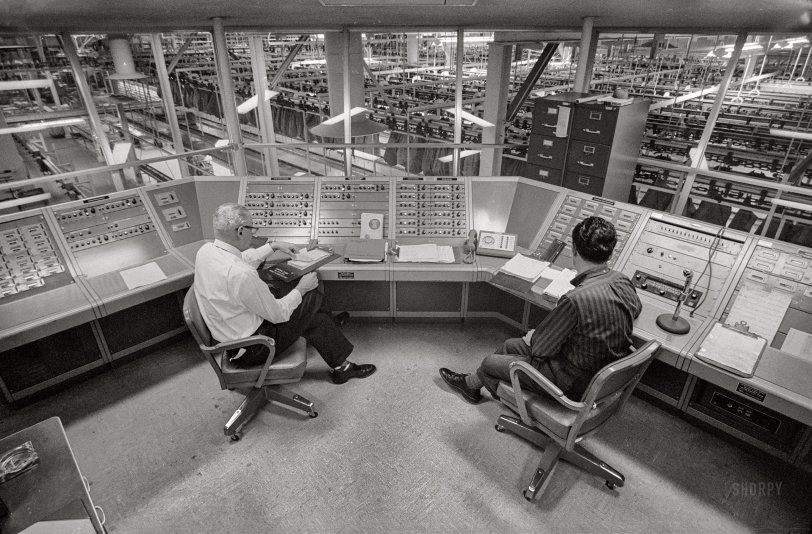
February 7, 1963. Providence, Rhode Island. "Post Office employees sitting at Central Control System overlooking work area." 35mm acetate negative by Thomas J. O'Halloran for the U.S. News & World Report assignment "Automated Post Office." View full size.
1959: "A Post Office Ordered With Full Automation"
WASHINGTON, Feb. 3 -- Orders for the construction of "Project Turnkey," the nation's first fully mechanized Post Office, were given today by Postmaster Arthur E. Summerfield. The office will be built and equipped in Providence, R.I., by Intelex Systems Inc. of New York for an estimated cost of $20 million. Intelex, a subsidiary of International Telephone and Telegraph Corporation, will then lease it to the Post Office Department for twenty years at an annual rental of $1.4 million. The mail will be entirely handled by machinery ... " (N.Y. Times, Feb. 4, 1959)
1961: "House Group Finds Automated P.O. 'Fails Miserably' "
A House subcommittee charged yesterday that Project Turnkey, the new automated post office in Providence, R.I., has "failed miserably" to meet expectations and that its cost to the Government appears to be "grossly excessive." (Washington Post, March 2, 1961)
- 10 comments
- 8539 reads
Academy of Music: 1905
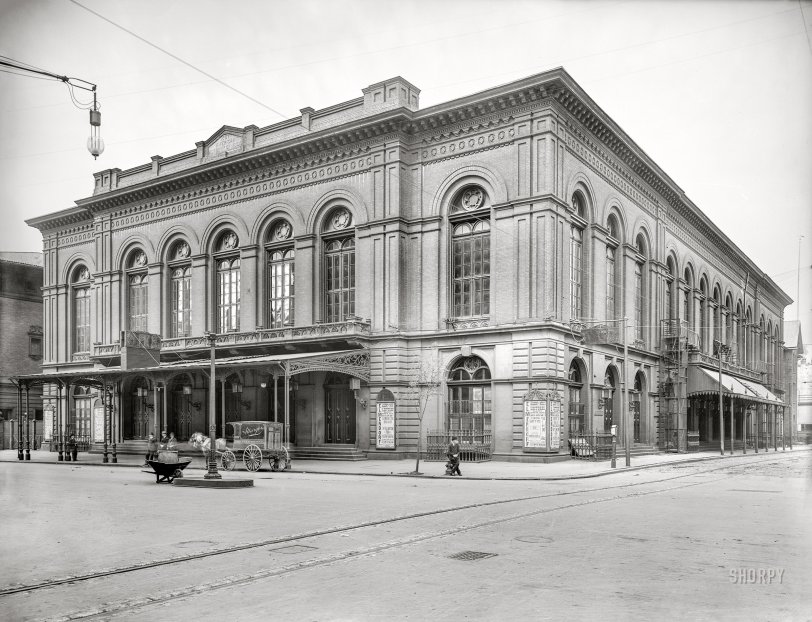
Philadelphia, 1905. "American Academy of Music." With two examples of that latest thing in signage, the electric carriage call. 8x10 glass negative, Detroit Publishing Co. View full size.
- 4 comments
- 9418 reads
The Device: 1928
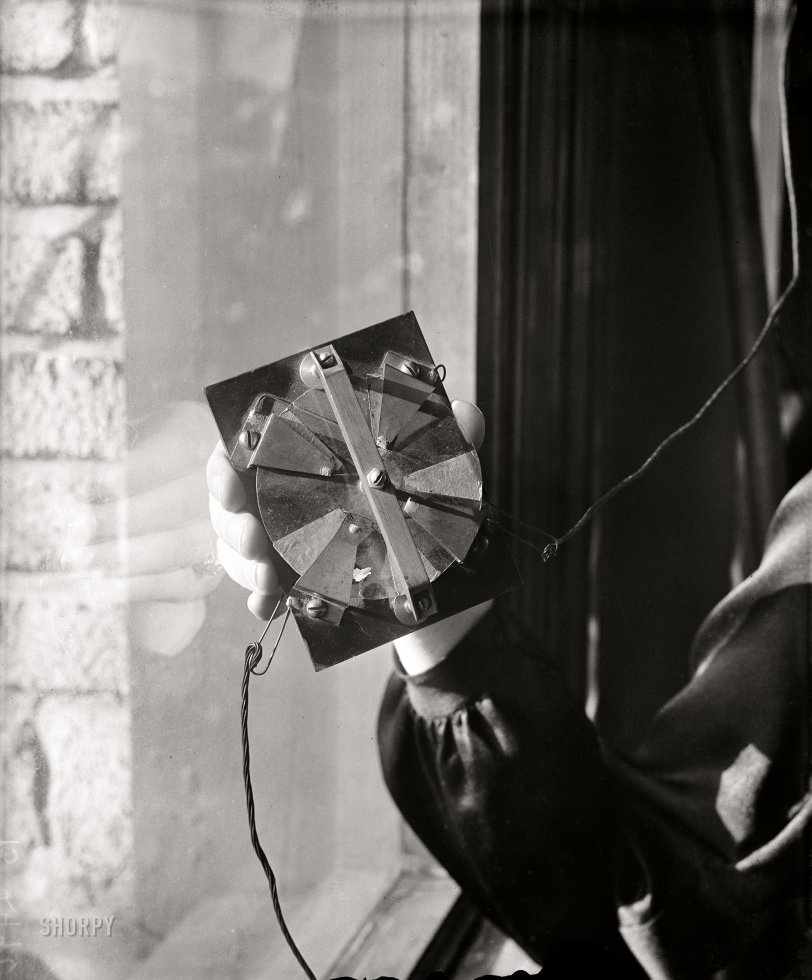
Washington, D.C., circa 1928. "NO CAPTION" is all it says here. Whatever this is, wires are involved. 4x5 inch glass negative, Harris & Ewing Collection. View full size.
- 25 comments
- 16753 reads
Print Shop: 1922
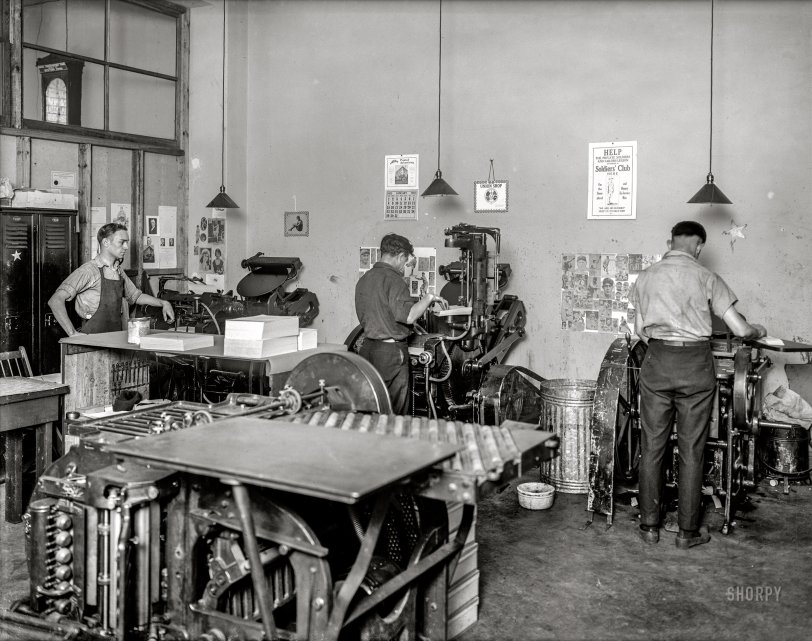
January 1922. Washington, D.C. "Machinists' Association -- printers." Activities relating to the International Association of Machinists. National Photo Co. glass negative. View full size.
- 14 comments
- 14598 reads
Radio Noir: 1926
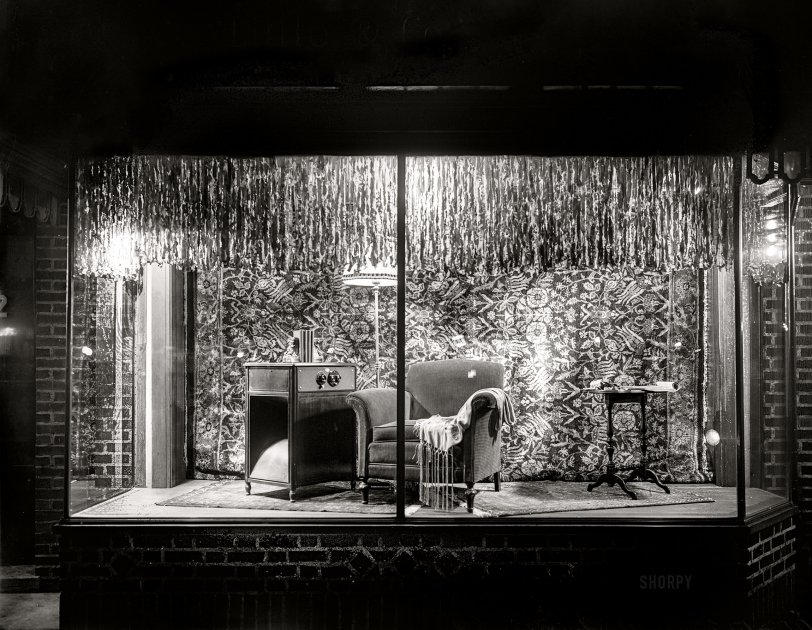
Washington, D.C., circa 1926. "Thos. R. Shipp Co. -- Atwater Kent window display at Little & Company, 13th & I Streets N.W." More specifically, the Atwater Kent Model 30 radio. National Photo Company glass negative. View full size.
- 10 comments
- 18355 reads
Miracle in Moscow: 1959
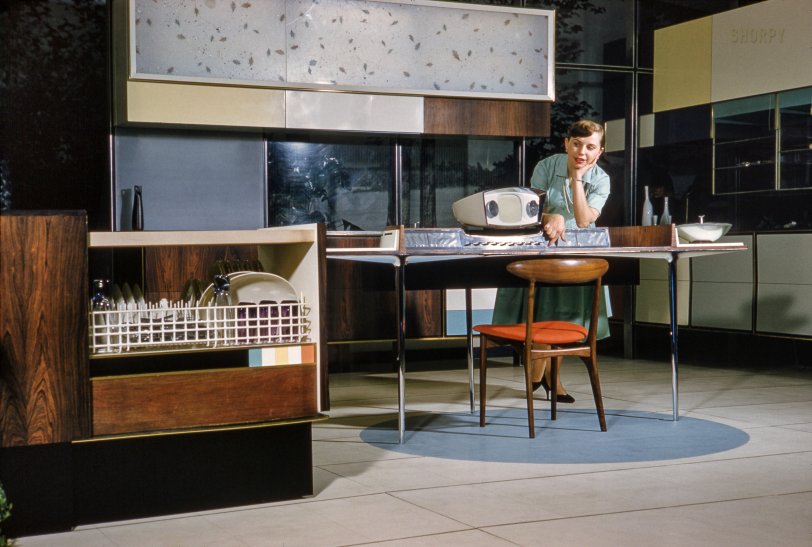
March 1959. "Home economist Anne Anderson demonstrating the RCA-Whirlpool 'Miracle Kitchen of the Future,' a display at the American National Exhibition in Moscow." Kodachrome by Bob Lerner for the Look magazine article "What the Russians Will See." View full size.
- 9 comments
- 11872 reads
On My Radar: 1952
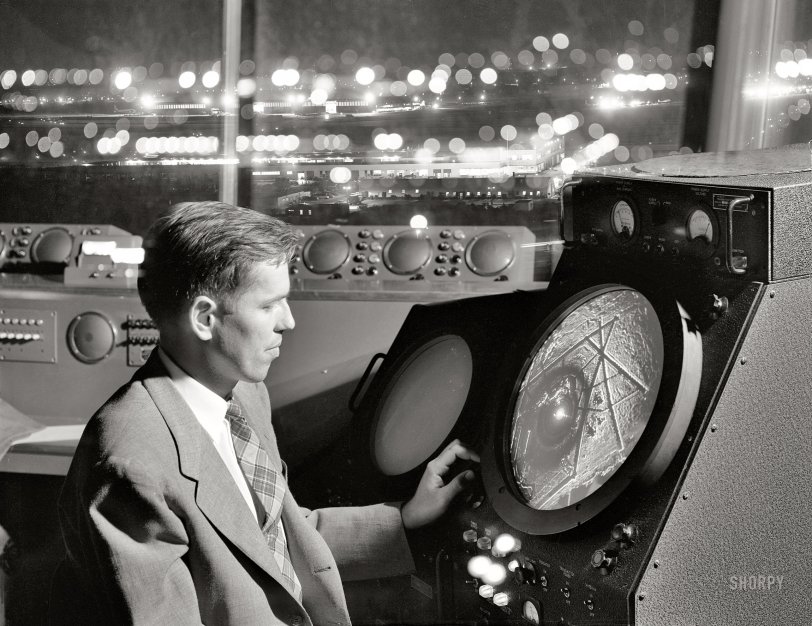
September 1952. "Man in an airport control tower looking at radar screen. Also other equipment used by air traffic controllers." Acetate negative from the Look magazine assignment "International Airport." View full size.
- 5 comments
- 9112 reads
The Dirt Show: 1937
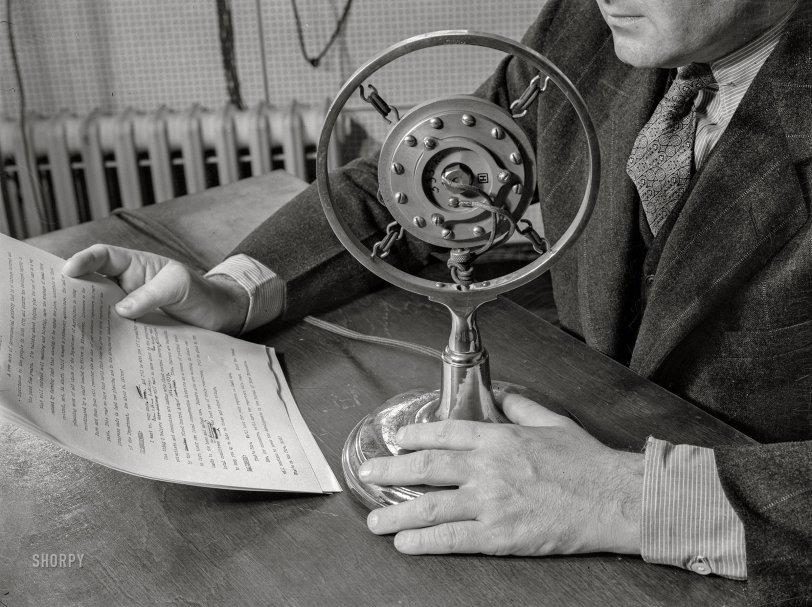
November 1937. "Radio microphone used in information work. United States Department of Agriculture." The subject here seems to be soil conservation. Medium format acetate negative by Arthur Rothstein for the Farm Security Administration. View full size.
- 4 comments
- 9054 reads
Calutron Girls: 1944
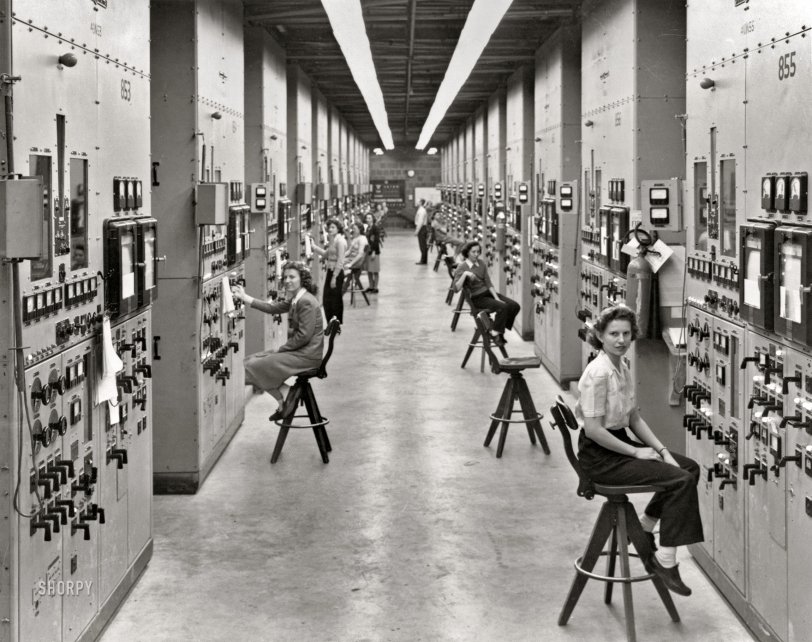
Clinton Engineer Works, Oak Ridge, Tennessee, 1944. "Calutron Girls -- Gladys Owens (foreground), one of the workers monitoring 'Calutron' mass spectrometers at the Y-12 uranium isotope separation and enrichment plant. Like many of these women, she did not realize the significance of her work in the development of the first atomic bomb until long after the war had ended." Photo by Ed Westcott, U.S. Army Corps of Engineers. View full size.
- 11 comments
- 16622 reads
Future Tents: 1959
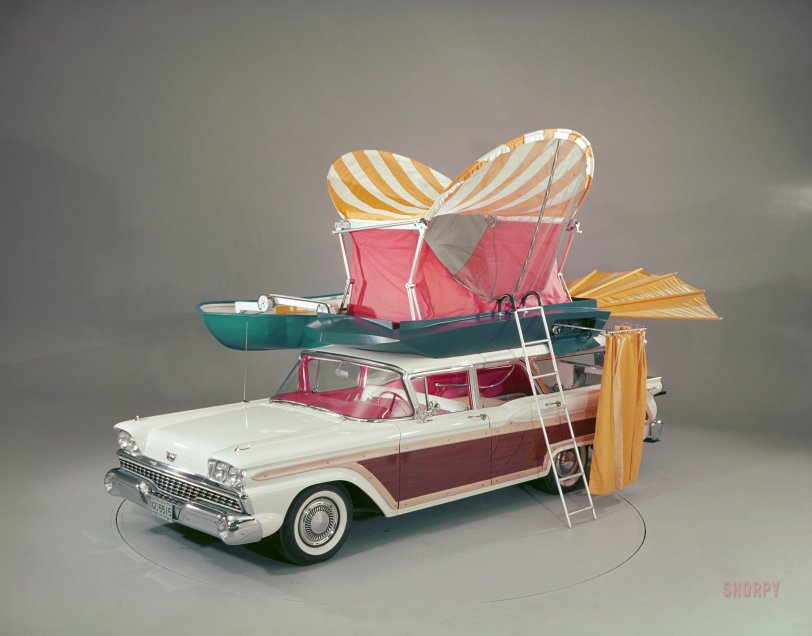
"1959 Ford Country Squire with pushbutton 'Station Wagon Living' equipment." Color transparency from the Ford Motor Co. photographic archive. View full size.
FORD WILL EXHIBIT PLUSH CAMP WAGON
In the experimental station wagon developed by Ford Motor Co., the outdoorsman with a strong push-button finger can set up camp without getting out of the car. First public showing of the easy-does-it camping equipment will be at Eastland Center in Harper Woods ... (Continue reading)
-- News item, Detroit Free Press, 1958
- 10 comments
- 22357 reads
Edison Phonographs: 1906
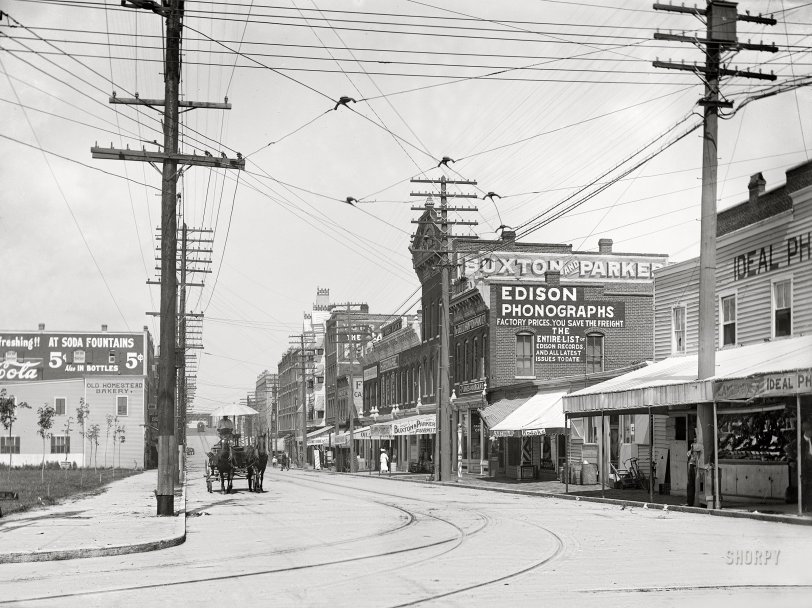
1906. "Twenty-Eighth Street, Newport News, Virginia." The go-to place for gadgets like gramophones and "Kodaks." 5x7 inch dry plate glass negative. View full size.
- 5 comments
- 9699 reads
The Singing Valise: 1922
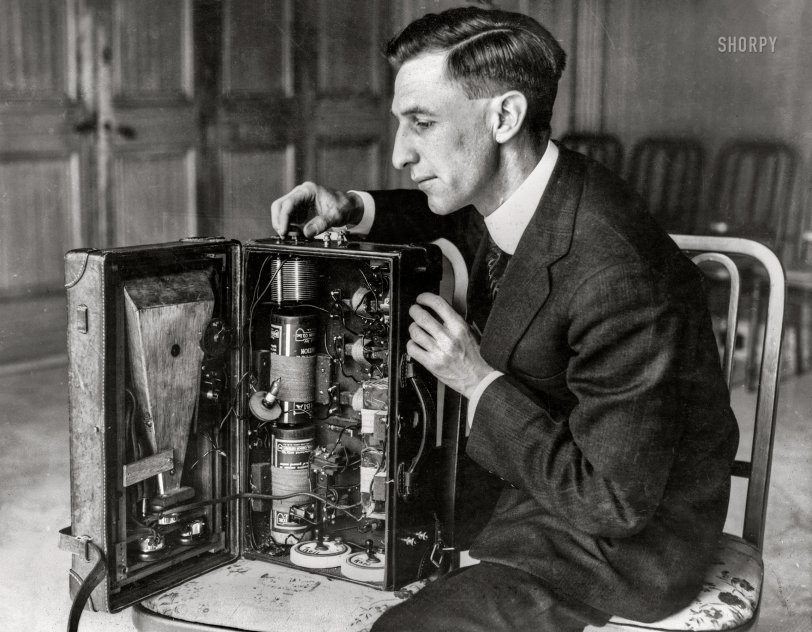
April 1922. Chicago. "The Singing Valise -- F.W. Dunmore, of the U.S. Bureau of Standards radio laboratory, with radio built in suitcase." Underwood & Underwood photo. View full size.
CARRIES RECEIVING SET
ABOUT IN SUIT CASE
Government Expert Astounds Gathering of Engineers With Demonstration of Singing Valise -- Explains Small Instrument Capable of Controlling Mechanism at Great Distances
CHICAGO, May 19 -- "The Singing Valise," or "Talks-as-it-walks," may be the latest thing in radiotelephone reception, displayed to the amazement of delegates attending the American Institute of Engineers meeting here last month at the Drake Hotel, by F.W. Dunmore of the radio laboratory of the U.S. Bureau of Standards. Incidentally, it may be pointed out that the engineers at their spring meeting are paying a great deal of attention to radio ...
- 7 comments
- Read more
- 9971 reads
The Spirit of Radio: 1909
- 8 comments
- 10820 reads
Plugged In: 1941
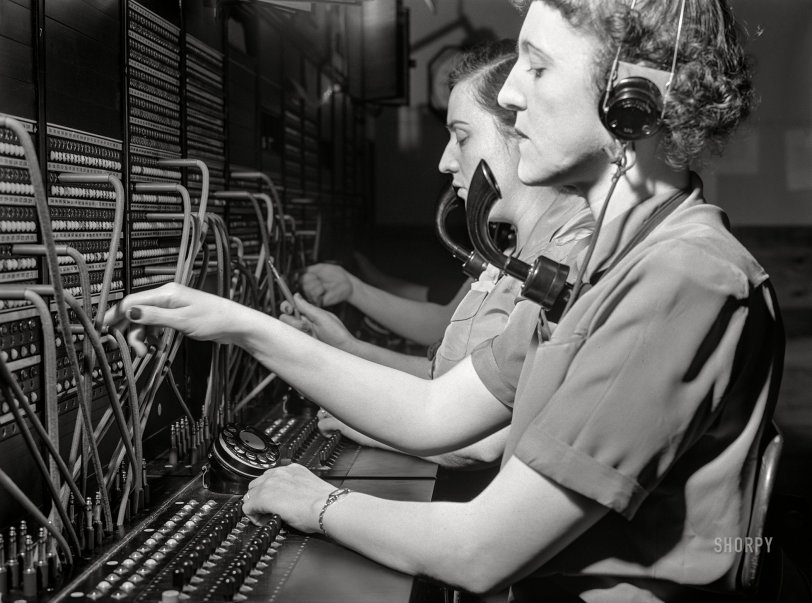
December 1941. "Telephone operators at Aberdeen proving grounds. They live in dormitory for defense workers. Aberdeen, Maryland." Acetate negative by John Vachon. View full size.
- 6 comments
- 7305 reads
The Big Dig: 1941
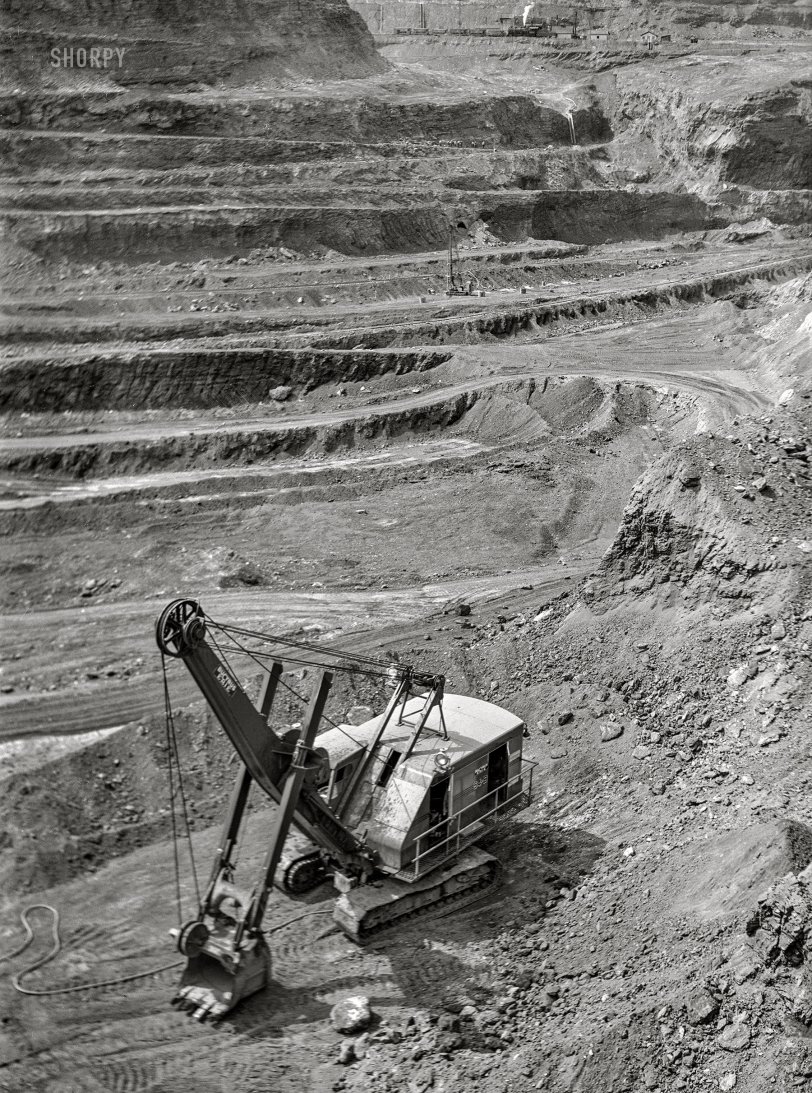
August 1941. "Albany iron mine. Hibbing, Minnesota." A Bucyrus-Erie Model 54-B electric shovel. Acetate negative by John Vachon for the Farm Security Administration. View full size.
- 4 comments
- 10194 reads
























